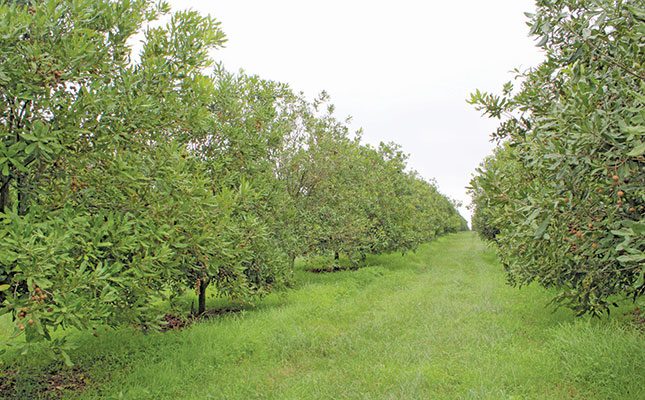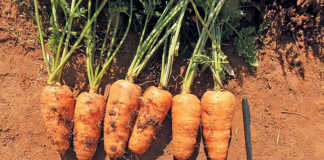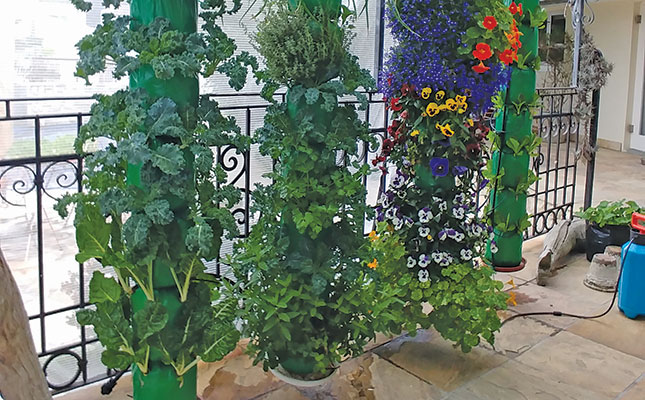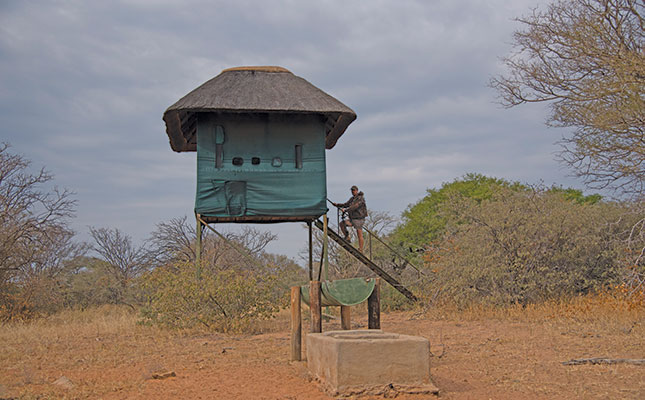
Photo: Lindi Botha
Fertiliser prices have surged dramatically over the past year, resulting in near-unsustainable production costs for farmers. Nonetheless, while these input costs are not expected to decrease in the near future, there is hope for macadamia farmers in South Africa.
At a macadamia farmers’ day held in Nelspruit in early March, Lindsay Tredgold, an agronomist at Fertech, explained that the high cost of fertiliser had as much to do with price as it did overapplication.
“Recent research has highlighted the fact that we’re overfertilising macadamias, which leads to mass and unnecessary foliar growth. I often see figures of over 140kg/ha nitrogen, when the tree is only using about half of that,” he said.
“Overfertilisation also adds significant unnecessary stress to the trees, as they’re sensitive to salts, and fertilisers are, after all, salts.”
Tredgold suggested that when preparing their fertiliser programmes, farmers should aim to apply only what the trees require to remain healthy and produce an optimal crop. This means they need to forego the all-too-common rationale of adding “just a little bit extra” for the sake of prosperity.
“The trees will only take up what they need, and any excess fertiliser will stay in the rhizosphere and burn the very sensitive proteoid roots. The trees will then redirect their energy from producing nuts to replacing the burnt roots,” he explained.
Analysis and quantification
Before farmers can even begin to ponder how much fertiliser to apply, they need to be equipped with accurate and up-to-date soil and leaf analyses. “Without these [you’ll be] dead in the water, and everything you do is based on guesswork,” said Tredgold.
According to him, macadamia leaf sampling needs to be carried out from February to March, and not from October to November, as was once the norm. This is because in late summer, the trees are functioning at their peak and carrying mature crops, and their requirements during this time should be taken into consideration.
The next step to determine the ideal fertiliser application rate is to quantify what is being removed permanently from the orchard, and its nutrient value. This includes husks, shells and kernels.
Research conducted by Australian agronomist Jeremy Bright provides the following data, with the figures expressed in kg/t nut-in-shell (NIS) at 10% moisture:

This table reveals that a 3t/ ha NIS yield at 10% moisture will remove a total of 31,5kg of nitrogen (N), 3,69kg of phosphorus (P), 27,45kg of potassium (K), 4,14kg of sulphur (S), 1,38kg of calcium (Ca)and 2,22kg of magnesium (Mg) per hectare.
The farmer must now determine the nutrition that the trees require to maintain their vegetative, structural and root growth.
“Unfortunately, there’s almost no data to show what the trees require during this phase of growth,” admitted Tredgold. The little data he does have at his disposal, however, shows that trees need 20kg to 30kg of N, 15kg to 25kg of K and 10kg to 15kg of Ca per hectare.
A key factor to take into account is the potential loss of nutrients incurred as a result of volatilisation (the conversion of a liquid chemical into a vapour, which escapes into the atmosphere), which mostly applies to nitrogen, leaching, and nutrients bound up in insoluble complexes. Again, Tredgold noted that no data is available to assist farmers in this calculation, but his rough estimates put this figure at around 12kg/ha each of N and K.
Having looked at the potential nutrient sinks discussed, Tredgold arrived at the following figures, expressed in kg/ha, for synthetic fertiliser requirements:

Help from nature
Applying synthetic fertiliser is a sure way to feed orchards, but Tredgold advised farmers to carefully consider the role of the soil in providing the trees with nutrients before buying fertiliser.
“Soil is endowed with massive reserves of nutrients, most of which are locked in insoluble complexes and aren’t readily available to the roots.
“Our soils are also generally characterised by low levels of carbon and organic matter, rendering them relatively infertile. But if you’re willing and able to pay more attention to your soil, you can harness this vast potential,” he said.
This involves embarking on a soil-therapy programme to unlock the reserves in the soil by building up humates and other organic matter to feed the potentially enormous microbial population in the soil.
“When the soil’s nutrient reserves are unlocked, the orchards can reach a far greater potential. The soil’s microbial population can be manipulated by management, which doesn’t cost a lot of money; simply bring back the husks from the nuts and add more compost,” explained Tredgold.
He added that as organic material breaks down, plant-available nutrients are released.
Sources of organic material include compost, kraal manure, chicken litter, mulched inter-row cover crops and pruning material, composted husks, and compost tea.
As an example, either kraal manure or mulched inter-row cover crops can supply the following nutrients, expressed in kg/ha:
![]()
A sunn hemp or good-quality legume cover crop can supply between 60kg and 80kg/ha of N, which equates to a saving of around R1 500/ha in N fertiliser.
Another factor that farmers should consider is nutrients provided by rain during thunderstorms. According to Tredgold, extensive research shows that 60mm to 80mm of rain during a thunderstorm can provide up to 40kg/ha of N.
Having examined the aspects necessary to establish optimal fertiliser rates, Tredgold provided the following calculation to determine how much synthetic fertiliser should be applied. This was after factoring in the N, P and K contributions from cover crops, soil and rainfall during thunderstorms (figures expressed in kg/ha):

From this table, one can see that, for a 3t/ha NIS crop, a farmer would need to apply only 23,5kg/ha and 29,45k/ha of synthetic N and K fertiliser respectively, and would not need to apply any P, as the natural sources of this element provide far more than what is required.
“When looking at the full picture, it is clear that macadamia orchards actually need far less synthetic fertiliser. Taking these figures into account, farmers could be cutting their fertiliser bills in half,” concluded Tredgold.
Phone Lindsay Tredgold on 083 626 5840, email Adriaan Heydenrych at [email protected], or email Arthur Manning at [email protected].











